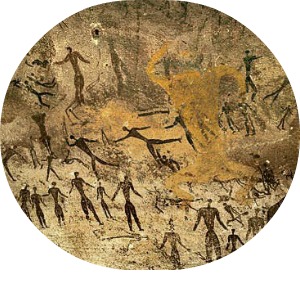Many people with known ancestors in Europe have done private STR-measurements to learn more about the history of their male line ancestors. The genealogical data goes back to about 200-500 years, and these STR-measurments might give information on finding close relatives and the history of their male line ancestors. The pattern of the STRs in the E-V22 group are quite different from the more common western european Y-DNA of R1a, R1b or I. At 5000 years before present these groups had (almost) no presence in Europe. The 3-10 male line ancestors increased enormously in population in 500 years and spread over most of Europe. Since that period these haplogroups were the large majority of Y-DNA in Europe. The STR markers of their descendants show a limited variablity, as is expected in a time period of 5000 years.
In this overview we collected the STR-values of the E-V22 persons that reported 67 markers, as is often tested by the largest Direct-to-Comsumer company familytreedna.com. It is common that people report their oldest known genealogical ancestor and these 67 markers. Some have tested up to 111 markers, others have tested only 11 or 37. In the case of E-V22 we see a few groups that share a fairly recent ancestor. These can be recognized by STR-values that are close together. In this group we can see two large groups, one being Jewish Ashkenazi and one being Arab. Each of these groups have an ancestor of about 1000-1500 years ago, who had many descendants after the two forefathers of these groups. In our collection we had 30 descendants in the first group, and 27 in the second group. Additional we have a few groups with 5-7 persons. Two of them are British, where a larger percentage of people have done Y-DNA testing and a group/family with a Czech background, where one person was enthousiastic and measured several people that he knew were genealogically related. Most of the other people are individuals or groups of 2-3 persons that have no close relation.
The analysis was done in 2015. The STR conclusions still stand as they did in 2015:
1) A founding father effect in (the south of) Egypt near 7000 ybp.
2) As slowly growing population and a slowly group of people leaving the original area.
3) No large male-line migrations to the south of Egypt after the founding father period.
4) Some E-V22 people left Egypt went to the Levant after the period of the Late Bronze Age Collapse.
5) Some E-V22 people left Egypt and the Levant since the Roman times.
In the present measured branches the people from Europa, and e.g. Saudi Arabia are over represented, so these branches are also over represented. The percentage of people in Britain and Saudi Arabia that are tested are so large, that new V22-members from these countries often have a close STR-match. This means that we already have a large percentage of the E-V22 branches in these countries. One of these branches is L674 whose ancestors went from Egypt to the Levant to the area of Kuwait/United Arabia Emirates/Qatar.

